Originally published June 21, 2019 | Updated March 26, 2021
Early morning sun crests over Seattle’s skyline as water pelts the windows of the San Juan Clipper ferry, erasing remnants of salt water spray from the prior day’s whale watching adventure. Droplets run in rivulets down the red, white and blue Union Jack painted on the hull, as if in a race to see which can return to the ocean the fastest. On the deck of the ship, it’s serious business as the lines are readied in preparation for freeing the boat from its berth.
Book Now:
Seattle to San Juan Whale Watching Day Trip Tour
Seattle to San Juan Island Overnight with Whale Watching
The vessel engines fire up, growling to life with a reverberating roar. Clipper’s veteran onboard naturalist, Stephanie Raymond tugs on her work gloves and casts off the boat’s mooring lines as the vessel eases out of downtown Seattle’s Pier 69. A native Seattleite, Raymond is no stranger to the sea. Growing up near the beach, Raymond has spent the majority of her life watching the water for whales and other sealife in the Salish Sea.
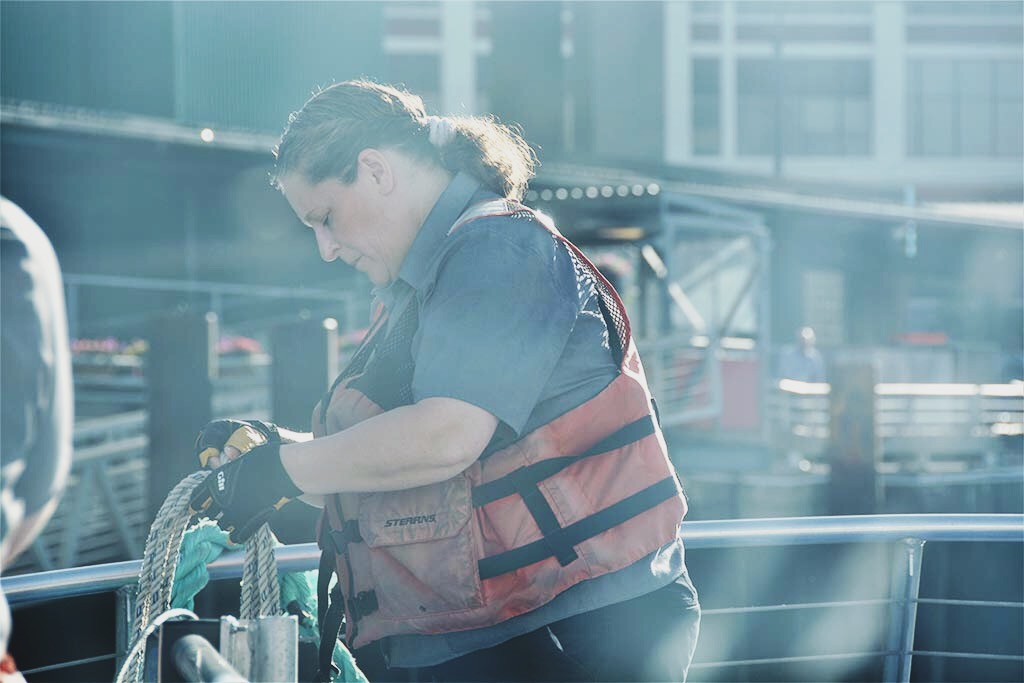
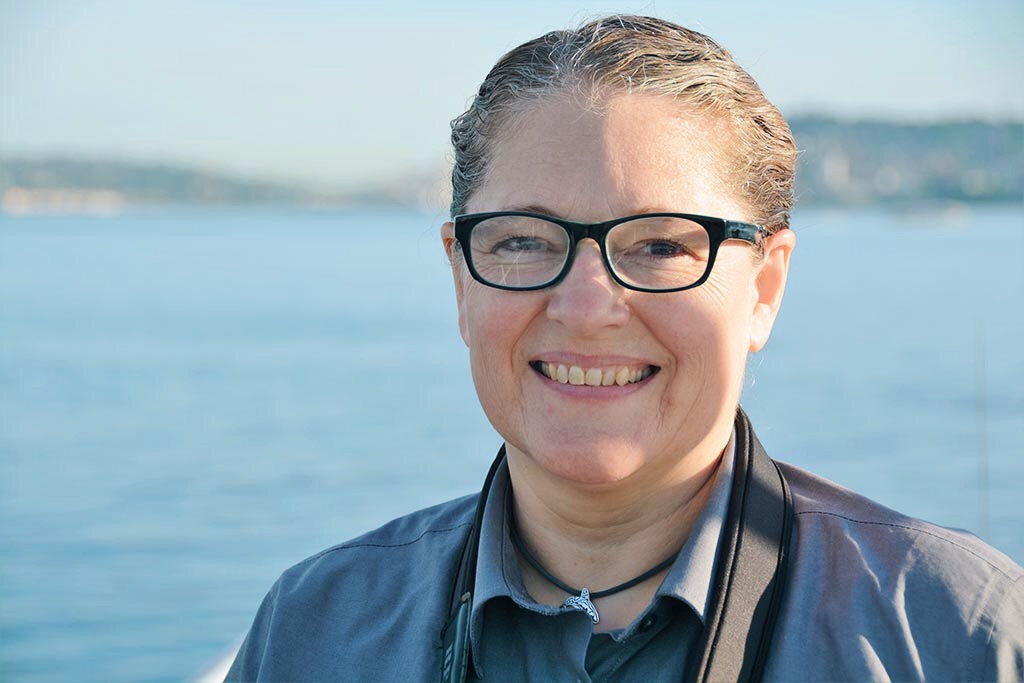
Each year, Raymond spends from late-April to mid-October cruising out to the sea surrounding the San Juan Islands. The goal? To help educate the public about some of the most remarkable marine mammals in the region, including humpback, minke as well as both the mammal-eating Bigg’s and salmon-eating Southern Resident Killer Whales (SRKW) that ply these waters.
“When I was six, my grandmother gave me a book about Namu, one of the first captive killer whales. That book introduced me to killer whales and I learned as much as I could about them. In third grade, I begged my former first-grade teacher to let me come to her classroom to teach about whales.”
After receiving her degree in Social Issues and the Environment, Raymond started her career at Seattle-based non-profit People For Puget Sound. She spent the next 15 years focused on coordinating educational programs and refining her knowledge of the ecology of the local marine environment in the process. It was during this time Raymond first experienced a whale watching tour and discovered the awe-inspiring nature of the salmon-eating resident orca whales (SRKW).
“We were privileged to spend some time with J-pod, and charismatic J-1 “Ruffles” swam right under our boat. Chinook salmon had just been listed as an endangered species in rivers around the Northwest, and having that experience with J-pod really drove home for me the importance of personal actions to protect the whales and their habitat.”
In 2010, Raymond took a gig as a substitute naturalist on one of Clipper’s gray whale watching tours and has been working on the San Juan Clipper ever since. Talking to Raymond, one can immediately sense the pride she feels about her chosen career path and the region she calls home.
“I truly love being able to share the wonder of this incredible place with people from all over the world. They come to see whales, but they learn about the history and ecology of the area. The thrill of seeing humpbacks, grays, minkes and killer whales grows even greater as our passengers learn how much we know and don’t know about these incredible animals and how the marine and upland ecosystems connect to support them.”
Once underway, Raymond kicks into full-on educator mode. She passes out Clipper’s Explorer Guidebook and uses the opportunity to connect to passengers and answer questions. As the San Juan Clipper skims north through Puget Sound, the landscape shifts in a matter of minutes. The slick steel and glass of the city give way to pristine green forests and craggy coastline. Raymond puts words to Mother Nature’s work as we glide through Possession Sound and Saratoga Passage, laying the groundwork for understanding the region’s geology and wildlife.
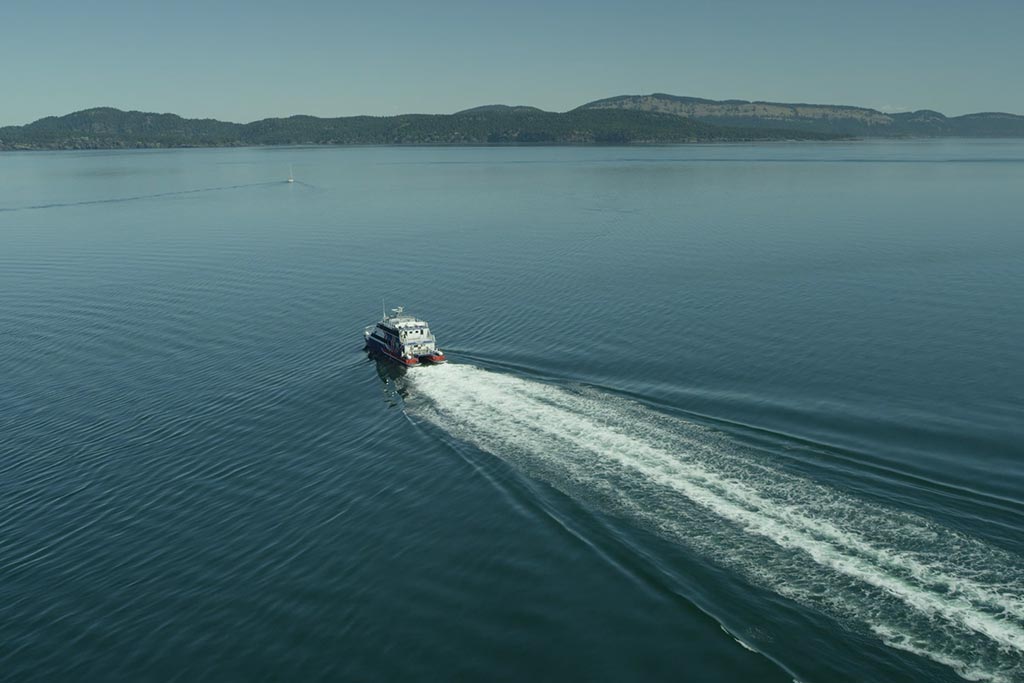
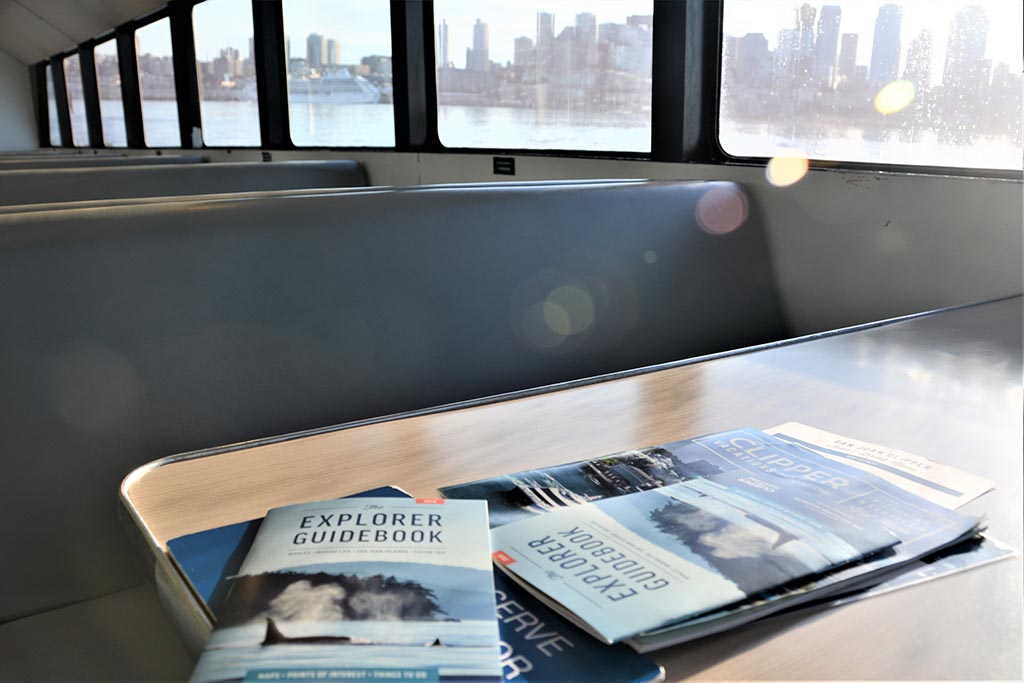
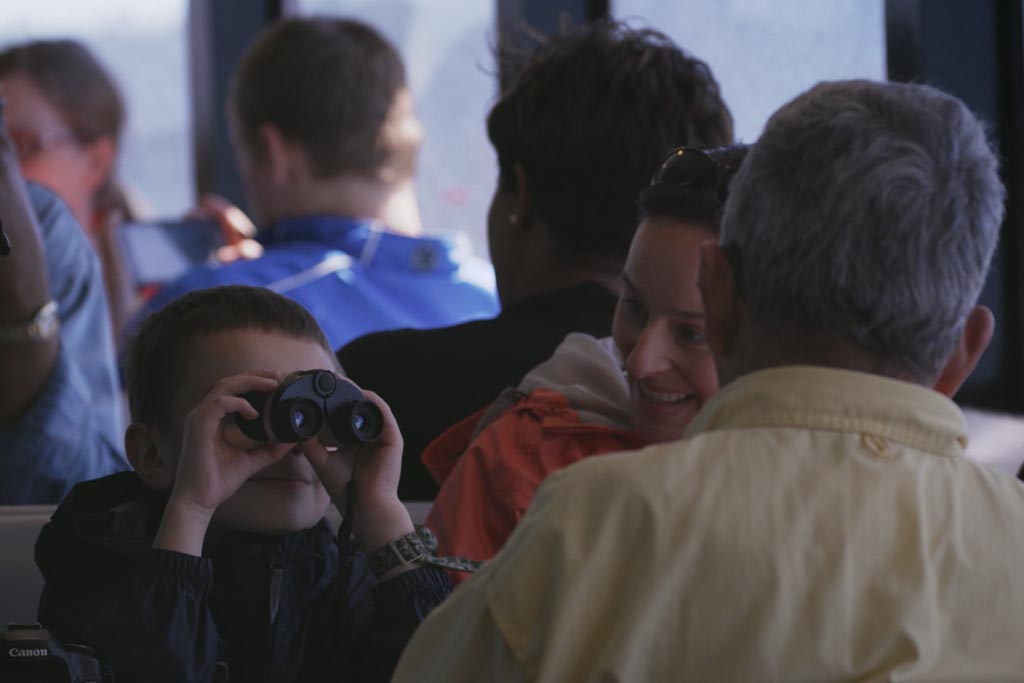
Raymond’s gaze sweeps along the horizon watching for bald eagles, great blue herons and harbor seals along the shore near Skagit Bay. A few enthusiastic birders inspire her to search extra hard for marbled murrelets and black oystercatchers as we head toward the narrow, swift-running Deception Pass. It is hard not to be awe-struck by the scale of the 1,487 foot-long Deception Pass Bridge perched upon the steep cliffs, towering above the churning, dramatic waters. This is the Pacific Northwest at its finest.

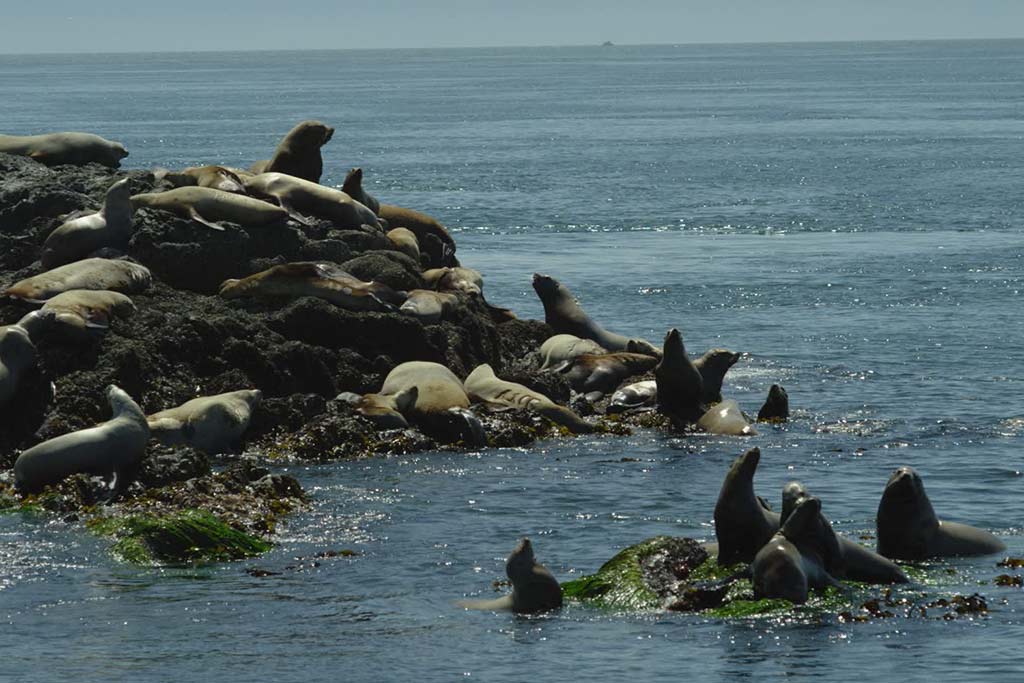
At the tanker-filled Rosario Strait, Raymond pops up into the wheelhouse to check in with the Captain for the latest intel on local whale spottings in the area. Unlike much of the modern world, the whales aren’t tagged and you can’t find them on GPS.
The only way to discover these magnificent and elusive creatures is the old-fashioned way – through sightings and active radio reports, which is no small feat. A quick buzz over to other members of Pacific Whale Watch Organization (PWWA) tunes them into what whales have been seen and where. Possible routes as well as stops at reefs to catch a glimpse of seals, sea lions and eagle’s nests are all under consideration as they dial in the itinerary for the day.
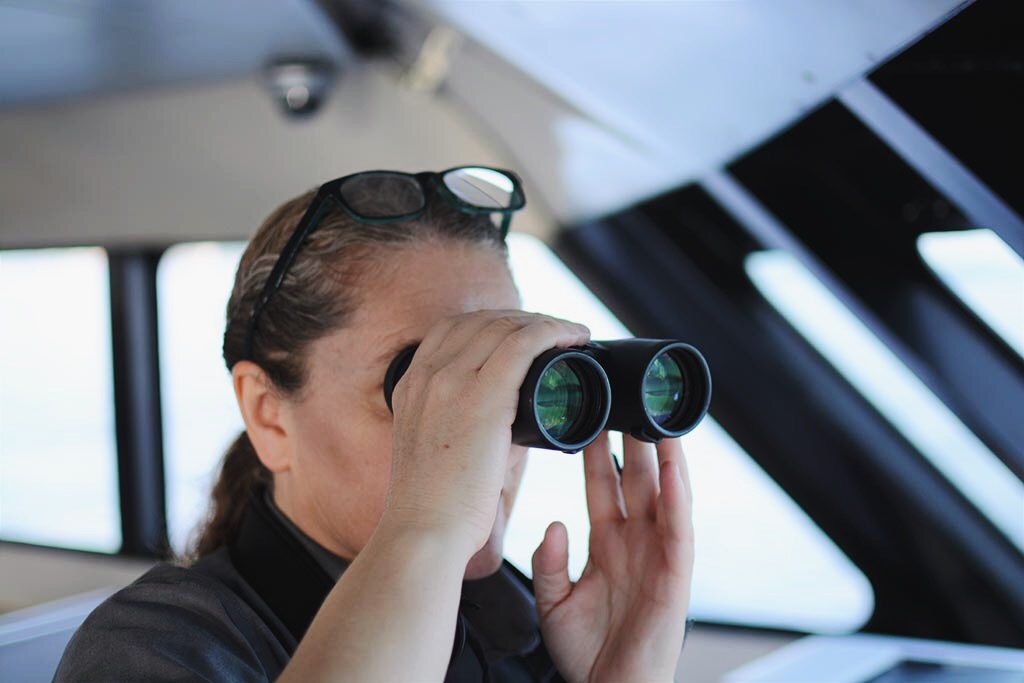
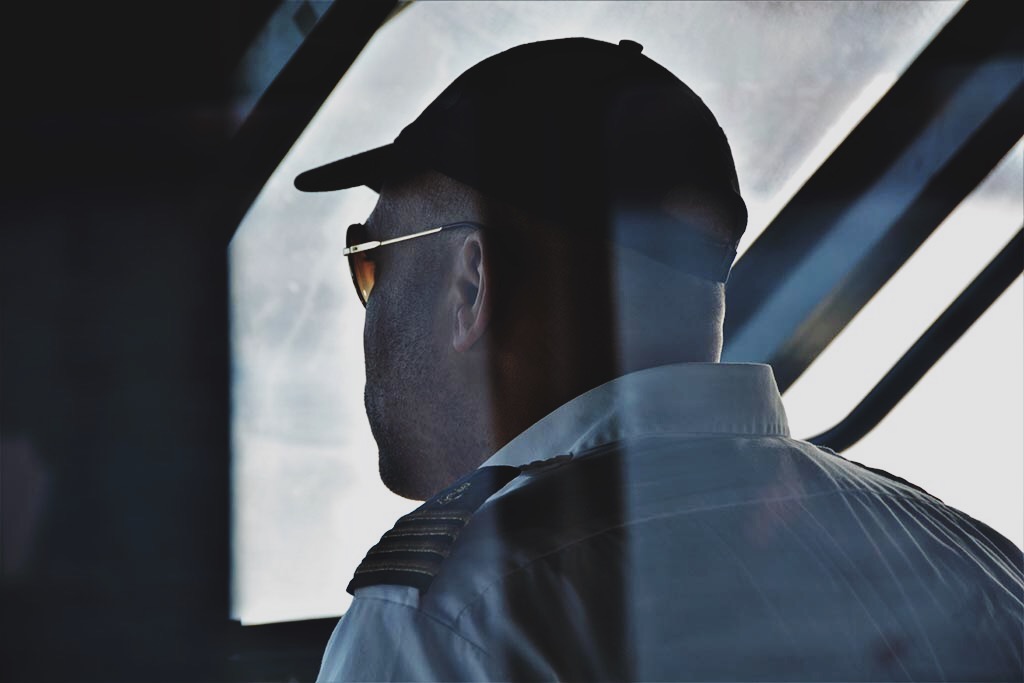
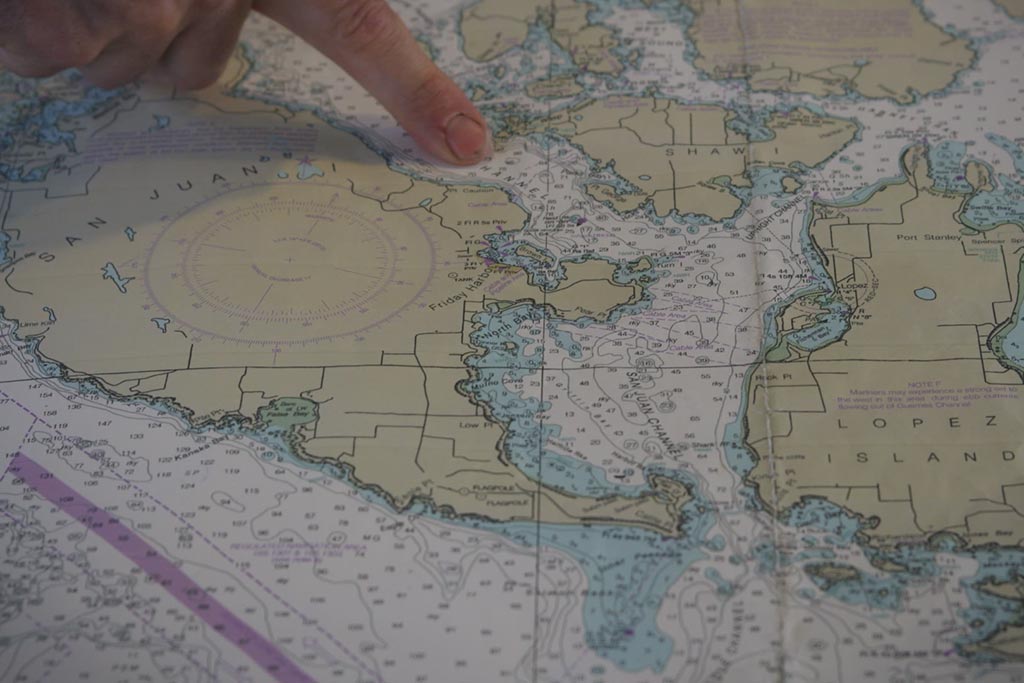
“I really love it when we get to go to the northeast portion of the San Juan Islands…Sucia Island, Matia Island, Barnes and Clarke Islands. They are spots most visitors to the islands won’t see if they don’t have a boat of their own. Turn Point Lighthouse on Stuart Island is one of the best backdrops I know of for whale watching pictures…on a clear day, with some luck, you could get a picture with a whale, the lighthouse AND Mt. Baker all in one frame. It’s gorgeous there!”
The ship’s heading established, Raymond locks her eyes on the route. She scans for clouds of steamy blow rising from the sea or the sun glinting a towering dorsal fin, slicing through the waves like an onyx knife. Rocking a unique whale necklace, she’s calm and confident, ready to tell people exactly when and where to look for whales. Abiding by the PWWA’s safe whale watching guidelines for low-impact, science-based viewing, the San Juan Clipper slows to no more than 7 knots within a ½ mile radius of whales and avoids approaching closer than 200 yards from any whale (300 yards from SRKW).

A humpback whale splashes and twirls as it traverses the waters of the Haro Strait. Not long after, a group of mammal-eating, Bigg’s killer whales surface off Henry Island, cartwheeling, breaching and tail lobbing in excitement as they hunt down a minke whale. The orcas emerge from the waters in unison, much like swimmers performing in a synchronized show. Watching these impressive marine mammals flow through the water mesmerizes and enchants – it’s a magic unlike any other.
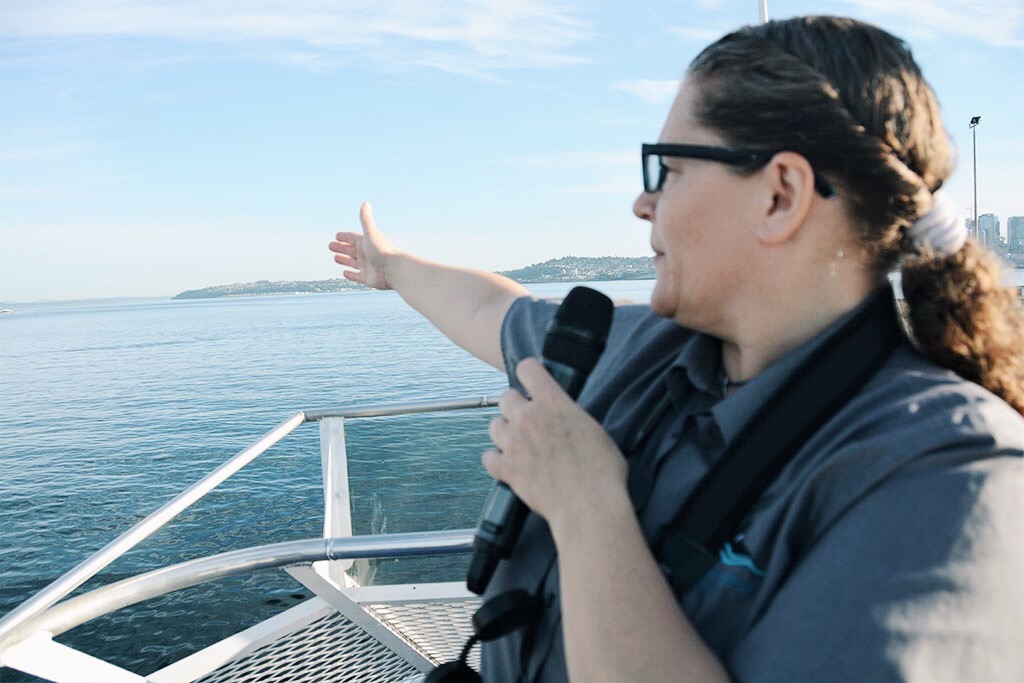
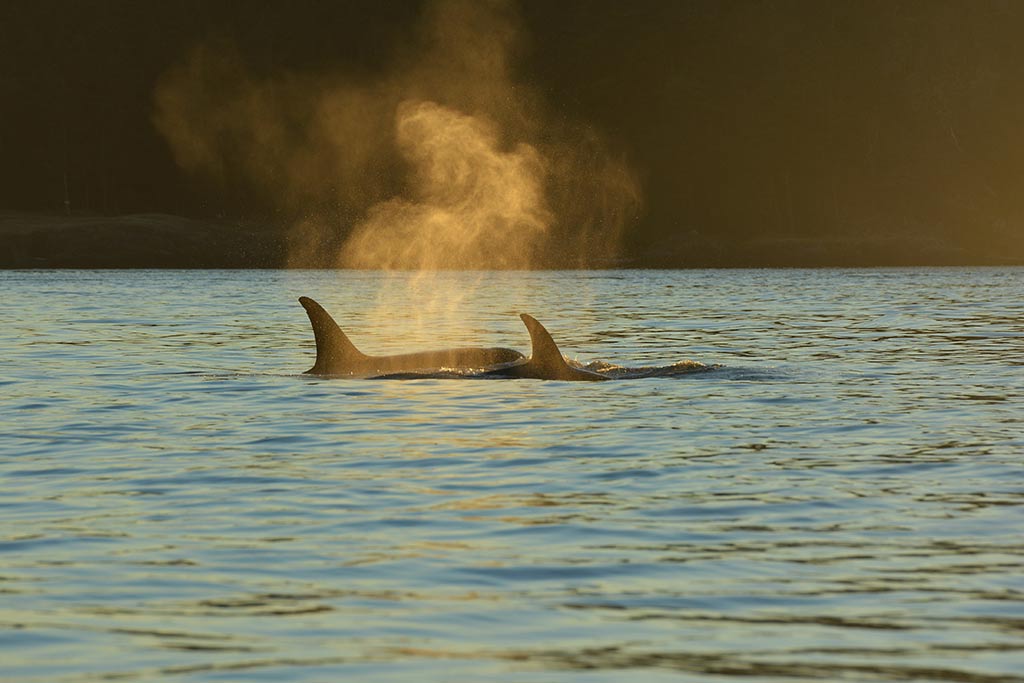
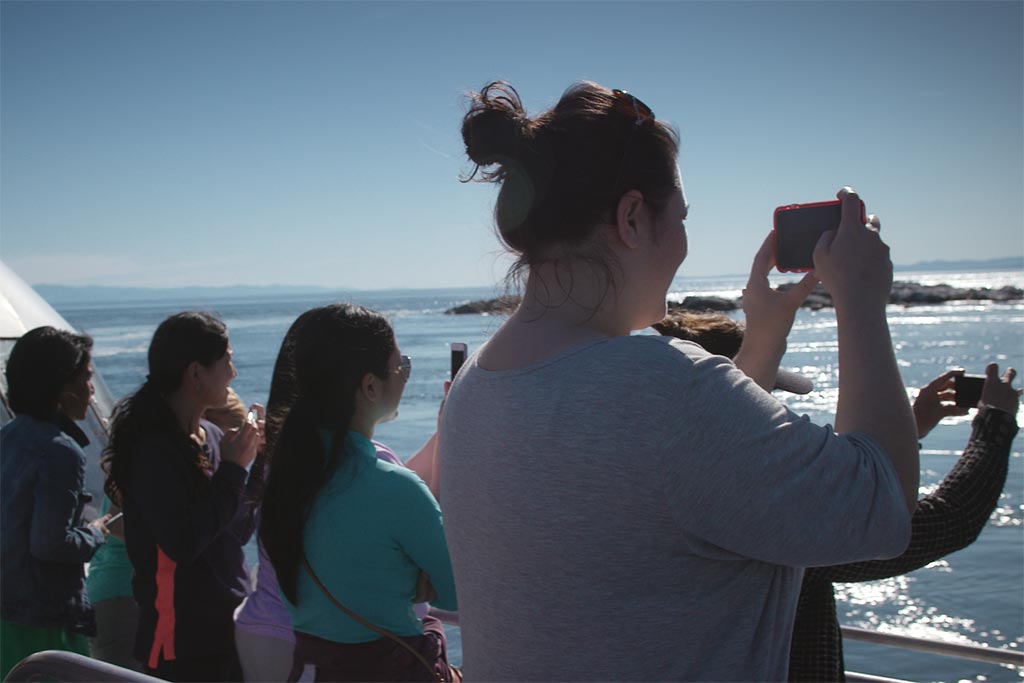
With their striking white and black markings and awe-inspiring movements, there is a mystical quality to the whales that have occupied our waters for hundreds of years. Living here in Seattle, it is easy to forget how lucky we are to be able to come across not one, but many types of whales a few short hours outside of the city.
“I think what I’d most like passengers to know is that we can see several different kinds of whales, not just orcas, and that two different kinds of orcas might be seen. We rarely see the salmon-eating killer whales because they aren’t around, but we do see a lot of the mammal-eating killer whales.”
The region’s cherished orca whales can be broken into two distinct groups: mammal-eating Bigg’s orca whales and salmon-eating Southern Resident Killer Whales (SRKW). Traveling in small pods up and down the West Coast and feeding on marine mammals such as seal and sea lion, mammal-eating orcas are thriving. There have been 80 recorded new births in local pods since 2012.
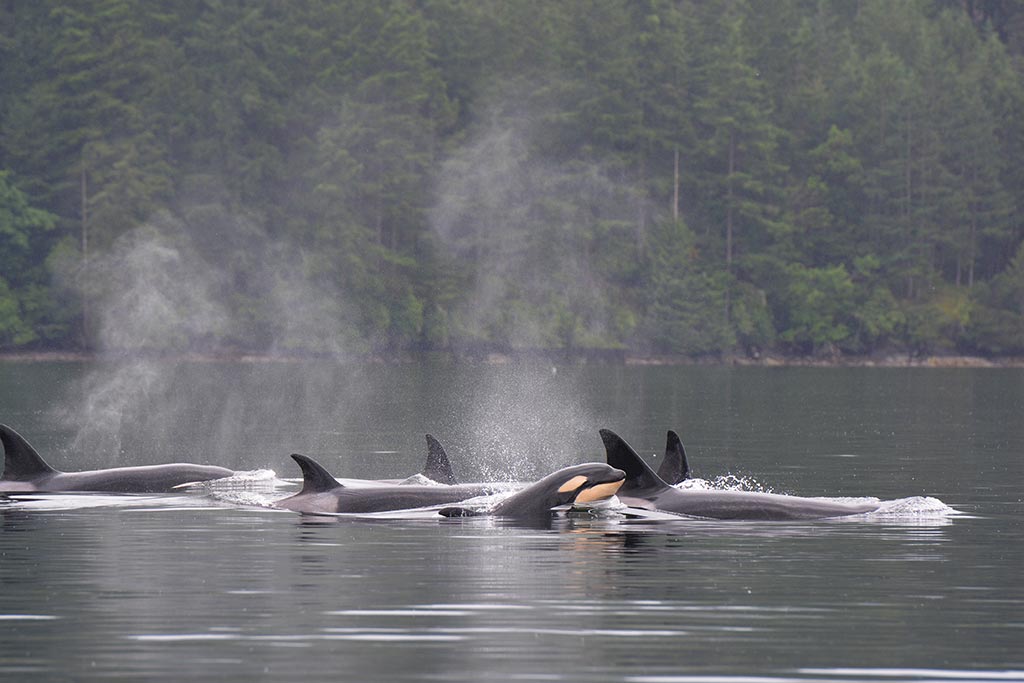
Unlike mammal-eating orcas, salmon-eating southern resident orcas have a smaller and more defined range, spending four-seven months of the year in the Salish Sea. They travel in distinct family groups, made up of 20-40 whales known as J, K and L pods. Sadly, their numbers are dwindling. A mere 74 whales remain among their three distinct family groups as of January 2021.
There are several reasons why the numbers of these salmon-eating orca whales may be dwindling. Their diminishing food supply is a leading cause and having a drastic impact on the species’ ability to survive. Salmon-eating orcas rely on Chinook salmon for more than 70% of their diet. An adult resident orca needs 100-300 pounds of food a day, which is about 40 salmon a day.
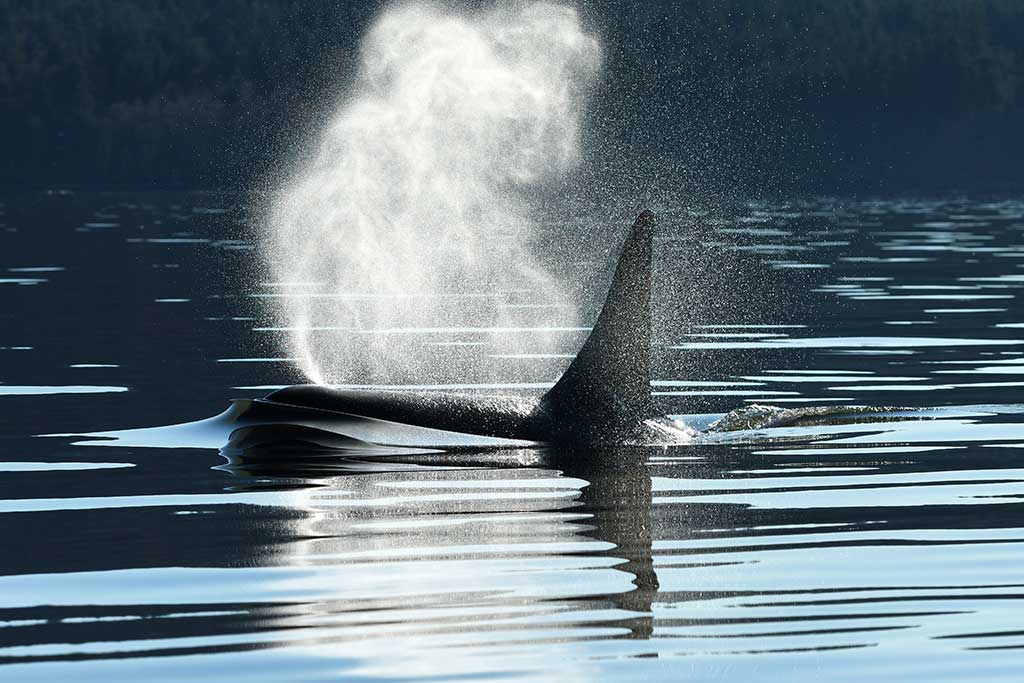
Changes in salmon habitat and water conditions are causing substantial decreases in the Chinook salmon runs. As a result, the salmon-eating orca whales have to work longer and harder to find the food they need to survive. In short, they must burn through their reserve fat storages for energy, setting them up for health issues and death.
A hush falls over the boat as passengers settle back in their seats with a new appreciation for the region and the wildlife. Raymond takes advantage of the break in the action to document the details of the sighting in real-time. These reports help track and monitor the health of the whales.

“We collect data as part of a Whale Museum program. We fill out their data sheets each day with which whales we have seen, where they are and if they were doing anything noteworthy, and that is all submitted to the Museum and other organizations for analysis.”
On the way back to Friday Harbor, Raymond arms herself with the onboard photo ID guide for the whales, helping passengers identify the animals in their pictures and sharing information about their habits and life history. Paired with a life-sized cutout of J-pods’ former matriarch, Granny (J-2) and the chance to get hands-on with a bristly baleen sample, a round of “oohs” and “ahhs” is easily elicited from the kiddos.
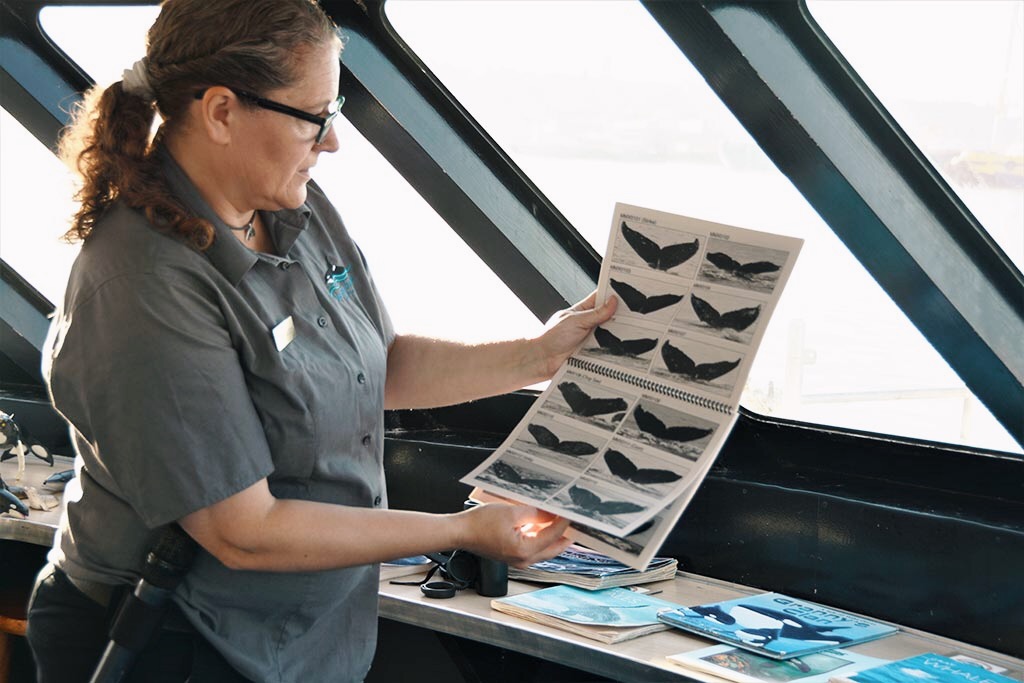
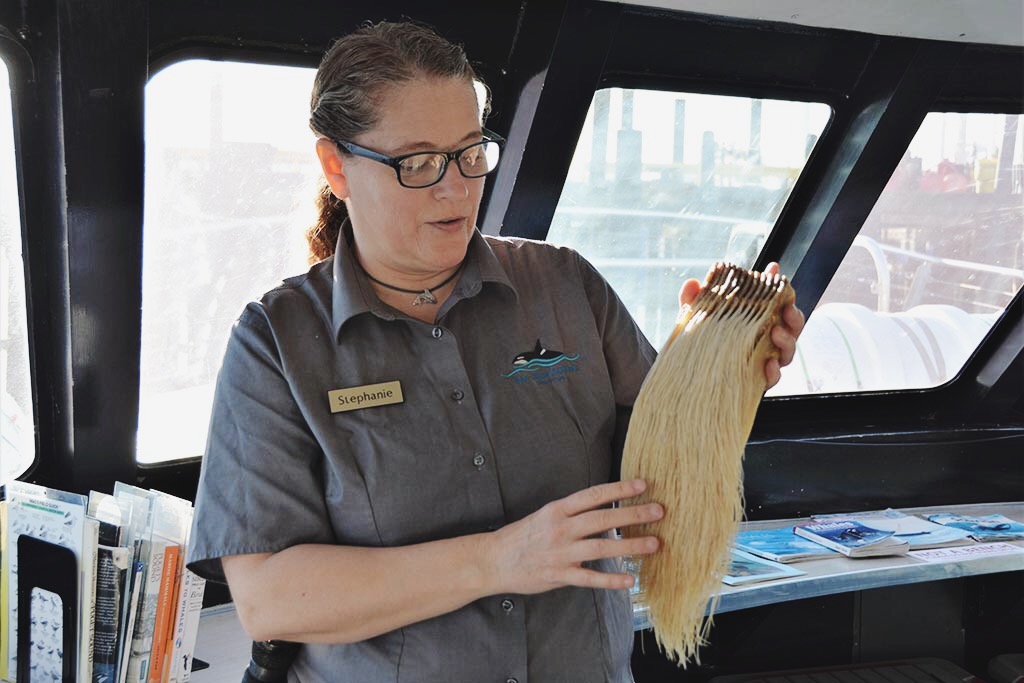
In between sharing whale factoids, Raymond intersperses a healthy dose of local history. All the while, keeping an eye the water. She says, “We never know what we’ll see or experience before we’re tied up at the dock at the end of the day, and that’s one of the things I love about it.”
While catching sight of these incredible marine mammals navigating our waters is one of the most magical moments you may have, whale watching is about far more than wildlife observation. Spending a few hours with the whales leaves you with a new sense of connectedness to these amazing animals. Empowered with information and first-hand experience, you can help educate friends, family and children about protecting these creatures through conservation. A gift for future generations that is far better than any souvenir you can buy on the trip.
5 Things You Can Do to Help Protect Our Salmon-Eating Southern Resident Orca Whales
1. Volunteer or Donate: If you live in the Pacific Northwest, ask our onboard naturalists about how you can get involved with habitat restoration projects to protect and increase the supply of Chinook wild salmon.
If you are visiting the area, consider visiting The Whale Museum in Friday Harbor to donate in support of research and rehabilitation efforts to protect our salmon-eating Southern Resident Killer Whales. You can also learn about other ways to assist whale conservation efforts.
2. Avoid farmed Atlantic salmon: Farmed salmon have a detrimental effect on our wild populations, causing issues such as the spread of disease, environmental pollution (the concentrated antibiotics, pesticides and chemicals used in farms often leach into local waters) and a potentially weaker salmon gene pool due to wild-farmed salmon hybrids.
3. Eliminate Unnecessary Plastics: Instead of plastic bags and bottles, which often end up in the ocean, use reusable shopping bags and stainless steel water bottles.
4. Avoid Toxic Chemicals: Avoid using toxic pesticides and fertilizers in your yard and garden, and choose organic foods when possible. This will reduce the amount of chemical runoff into waterways, which eventually end up in our oceans. Use biodegradable cleaning supplies.
5. Keep Learning and Share Knowledge: As research evolves, we encourage you to continue learning about orca whales and sharing knowledge with friends, family and co-workers! Knowledge is power in protecting our precious salmon-eating Southern Resident Killer Whales!
Feature Photo: Scott Meis

